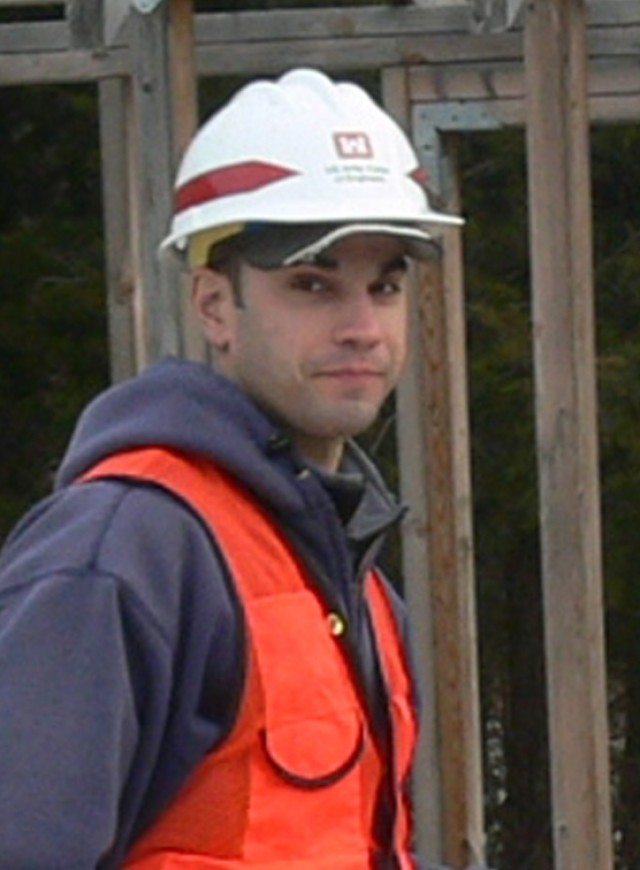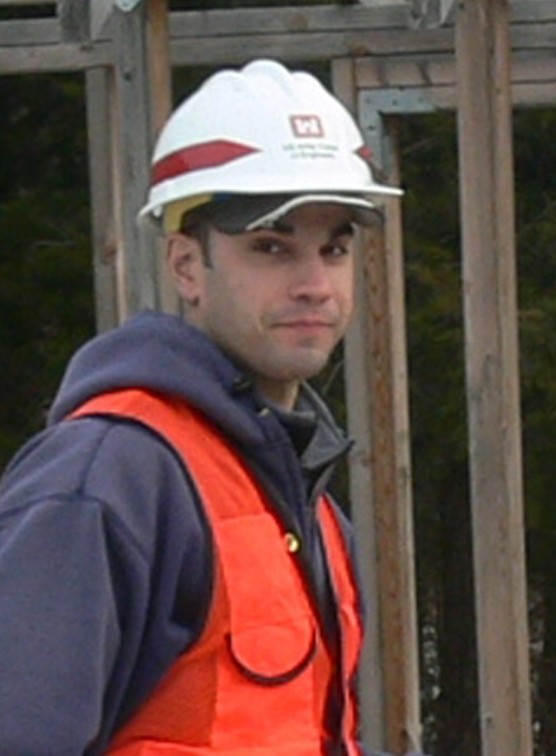CONCORD, Mass. (Army News Service, April 14, 2008) - The U.S. Army Corps of Engineers New England District is assisting the Community Based Health Care Organizations of Massachusetts in a first of its kind program. It will provide combat-wounded Soldiers byopportunities for work assignments that complement their medical care and recovery program.
<b> Warrior Workplace Program </b>
Eight CBHCOs were created in 2004 with one mission: to help service members move on to the next moment in their lives.
The program allows Soldiers wounded in the war on terrorism an opportunity to return home, receive medical care locally while recovering in a familiar atmosphere and whenever possible, gain meaningful employment. While most Soldiers in this program return to local armories or reserve centers for individual work assignments, sometimes something special happens.
"Our population is National Guard and Reserve," explained Maj. Mark O'Clair, commander of the Massachusetts CBHCO. "These are all part-time soldiers, so they all have civilian jobs outside of the military."
While the Soldiers convalesce, they are still being paid by the U.S. Army and still have to report to a work assignment when not going to medical appointments. Realizing that some Soldiers would respond better to a work environment similar to their civilian occupations, O'Clair turned to the New England District for assistance.
"We developed the Warrior Workplace Program so when Soldiers arrive at Maj. O'Clair's unit, he would pass their names and skill sets to me and I would contact the District leadership to see if they had work available - the response was immediate and positive," said Mike Russo, project manager for the New England District Warrior Workplace Program.
<b> Taking Care of the Soldier </b>
In 2006, the lives of Maj. Mike Pacheco and Sgt. Kurt Mintell changed instantly when they were injured on separate deployments in Iraq.
When Mintell wasn't serving his country in the Connecticut Army National Guard, he was a carpenter. He was used to working with his hands and being outdoors. Under the Warrior Workplace Program, Mintell works at the District's Thomaston Dam on various projects located in Thomaston, Conn., but only when time allows.
"First and foremost, the wounded Soldiers must take care of themselves," said O'Clair. "Medical appointments come first, and when they have time, they report to their Corps of Engineers work assignment."
New England District supervisors know ahead of time what the Soldier's skill sets are as well as any limitations.
"The good thing is the jobs that we've set up through the Corps of Engineers allows the Soldiers to do functional tasks that they can see success and actually accomplish something," said 1st Sgt. Dennis Donlan of the CBHCO. "A lot of times if they go back to an armory they can't do their normal job and they sit for hours answering a phone. With Soldiers like Mintell, who are used to being outdoors, he's actually looking at construction jobs and doing things and interacting with people, which are a huge benefit for his recovery."
Pacheco, a major in the Army Reserve, has been working at the District's Edward MacDowell Dam. He worked on an emergency response exercise for the Corps and coordinatied it with the state of New Hampshire. He said that he has had an excellent experience with the Warrior Workplace Program.
"It's been tremendous," he said. "I think a major part of convalescing is being able to be with family. The CBHCO is taking care of all my needs. They have managed my medical care very closely and it has worked out very, very well."
Pacheco also had high praise for his Corps of Engineers coworkers.
"The people at the Corps are just so tremendous, I feel a little guilty that I can't be there every day because of all the medical appointments I have to go to," he said. "They've been so helpful, I kind of wish I was more heavily involved than I can be."
"The working relationship between the Massachusetts CBHCO and the New England District is the first in the nation between two agencies, and has worked so well, we'd like to expand it to different Corps Districts with New England's help," said O'Clair. "We have 170 Soldiers throughout New England, New York and New Jersey, so we have to find a geographical location for a Corps facility that's appropriate and within commuting distance of the Soldier's home."
<b> Warriors Facing Transition </b>
The Warrior Workplace Program was established by the New England District and the CBHCO to complement existing medical, counseling, advocacy and family support programs. To realize this joint commitment, said Russo, the District established a database that identifies each participating Soldier, home of record and skill sets-- then finds opportunities with the Corps of Engineers throughout New England and New York.
"Assisting our warriors back from combat transition into the civilian workforce and rebuilding a career is tough under any circumstance -- but it's even tougher to adjust to life after a serious injury," said Col. Curtis L. Thalken, commander, New England District.
"We have more than a duty to assist these amazing individuals; we are the proponents of the Warrior Workplace Program and we are advocates for its expansion throughout the Army Corps of Engineers. This is just part of our commitment -- to those Soldiers who have served, sacrificed and are now recovering from their injuries - to provide the opportunity for these warriors to once again succeed."
(Ann Marie Harvie is the editor for "Yankee Engineer," U.S. Army Corp of Engineers, New England District)


Social Sharing